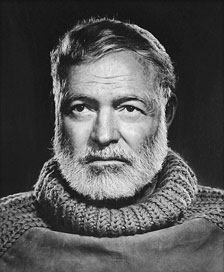Beyond the town the bridge over the river still exists and the river symbolizes time and timelessness, healing and the natural cycle of life and death. Nick is on a journey, perhaps he sees it as a religious quest given the Christian symbolism of the fish. From the town, a road leads into pristine back-country. It crosses a bridge under which the trout hold steady against the current, just as Nick needs to hold steady.
From the bridge he glimpses a kingfisher taking wing, a bird Johnston points out symbolizes “halcyon days, peace and tranquility”. A large uprooted tree symbolizes the protagonist himself uprooted by war, and that his fragility is symbolized by the trout he releases carefully so as not to damage its protective slime coat. The campsite symbolizes safety, set deep in a pine grove and described in soothing greens; beyond three dead trees in the background looms the swamp where he will not venture.
His tent is portrayed as a less dark place than the emptiness outside, and becomes a place of safety and sanctuary. Conversely, the swamp is described in themes that convey it as shrouded in mist at night, and a place Nick deliberately tries not to think about. When he wakes in the morning, regenerated by sleep, he feels stronger and the swamp seems less threatening.
Reception
In Our Time was published as part of Pound’s modernist series by Three Mountains Press, Paris in 1924. The work was well received by critics; Edmund Wilson described the writing as “of the first distinction”, and in the 1940s he again wrote of “Big Two-Hearted River”, “along with the mottled trout … the boy from the American Middle West fishes up a nice little masterpiece.” When the story was published in the United States, critics asserted Hemingway had reinvigorated the short story by his use of declarative sentences and his crisp style. In 1952, reviewing The Old Man and the Sea—for which Hemingway would win the Pulitzer Prize and the Nobel Prize in Literature—The New York Times said of “Big Two-Hearted River” that it was one of the “best and happiest of his early short stories”.
Carlos Baker views the stories of In Our Time as a remarkable achievement for a young writer. Joseph Flora described “Big Two-Hearted River” as “unquestionably the most brilliant of the collection In Our Time”. The piece has become one of Hemingway’s most anthologized stories, and one of a handful subject to serious literary criticism since its publication, and belongs in the canon of 20th-century American literature. Beegel writes that it is considered “among the best” American short stories, along with Stephen Crane’s “The Open Boat”, Nathaniel Hawthorne’s “Young Goodman Brown” and Edgar Allan Poe’s “The Fall of the House of Usher”.
According to Benson, despite Pound and Joyce’s influence, Hemingway “carried the new form into the position of dominant influence” for much of the 20th century. Unlike other modernist writers, who wrote of man cut off from the past, Hemingway placed his narratives in the present and hence became “the true modernist”.
